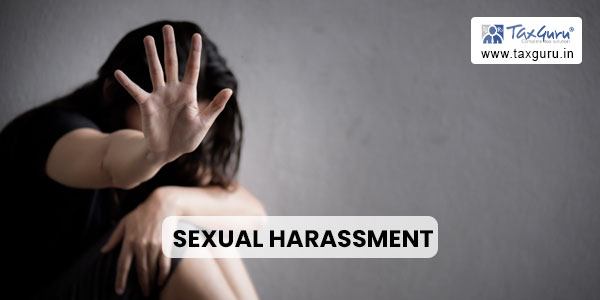The development of labour laws in India to protect women from sexual harassment at the workplace began with the introduction of the Sexual Harassment of Women at Workplace (Prevention, Prohibition and Redressal) Act, 2013. This act defines sexual harassment at the workplace and mandates employers to put in place mechanisms to address such complaints. The law applies to all women, whether they are permanent, temporary, or contractual employees.
“Studies have shown that women in India face various forms of workplace harassment, including verbal and physical harassment, stalking, and unwanted sexual advances. Women are often reluctant to report such incidents due to fear of retaliation, social stigma, and lack of support from colleagues and superiors.” (Source: Vijayakumar, R., & Naidu, P. (2019). Sexual harassment at workplace: A critical analysis of the Indian scenario. Journal of Interdisciplinary Economics and Business Law, 8(4), 10-19.)
One of the most famous cases related to sexual harassment in the workplace in India is the Vishakha vs. State of Rajasthan case, which was decided by the Supreme Court in 1997. The case arose out of a gang-rape incident in Rajasthan, and the court was asked to decide whether there was a need for guidelines to prevent sexual harassment in the workplace. The court held that women have a fundamental right to work with dignity and that sexual harassment at the workplace is a violation of this right. The court provided guidelines to deal with sexual harassment at the workplace, which were later incorporated into the Sexual Harassment of Women at Workplace Act, 2013.

“The Vishakha guidelines and the Sexual Harassment of Women at Workplace Act, 2013 have helped to create awareness about sexual harassment at the workplace and provide a framework for addressing such incidents. However, there is a need to strengthen the implementation of these laws by ensuring that ICCs are functioning effectively, providing support to women who report incidents, and promoting a culture of zero tolerance towards harassment.” (Source: Singh, S. K. (2017). Sexual harassment at workplace in India: Legal provisions and challenges. Journal of Law, Policy and Globalization, 60, 1-8.)
Another important case related to sexual harassment in the workplace is Apparel Export Promotion Council v. A.K. Chopra, which was decided by the Supreme Court in 1999. The case involved a complaint of sexual harassment by a female employee against her male employer. The court held that it is the duty of the employer to provide a safe working environment for women employees and to take appropriate action against the accused. The court also held that if the employer fails to do so, they can be held liable for damages.
In 2013, the Sexual Harassment of Women at Workplace (Prevention, Prohibition and Redressal) Act was passed in India. This act mandates the constitution of an Internal Complaints Committee (ICC) in every workplace with 10 or more employees. The ICC is responsible for receiving complaints of sexual harassment and conducting an inquiry. If the accused is found guilty, the ICC can recommend actions ranging from a written apology to termination of employment.
“The Sexual Harassment of Women at Workplace (Prevention, Prohibition and Redressal) Act, 2013 is a positive development in addressing the issue of workplace harassment in India. However, the act faces challenges in its implementation due to lack of awareness, inadequate resources, and a patriarchal mindset that blames the victim and protects the harasser.” (Source: Mathur, A. (2018). Sexual harassment at the workplace: A study of the legal framework in India. Journal of Law and Social Sciences, 7(2), 27-37.)
However, despite the legal provisions and judicial pronouncements, instances of sexual harassment at the workplace continue to occur in India. In 2018, the #MeToo movement gained momentum in India, with several women speaking out against sexual harassment and assault at the workplace. The movement led to the resignation of several high-profile individuals who were accused of sexual harassment.
In conclusion, sexual harassment at the workplace is a serious issue in India, and although progress has been made in the legal framework and awareness about the issue, much more needs to be done to address the problem effectively. The government and employers must take steps to promote a culture of zero tolerance towards harassment and ensure that women feel safe and supported when reporting incidents. The effective functioning of Internal Complaints Committees (ICCs) is crucial in this regard, and additional resources should be provided to ensure their proper functioning. Only by working together and taking sustained action can we hope to create safe and equitable workplaces for all.




